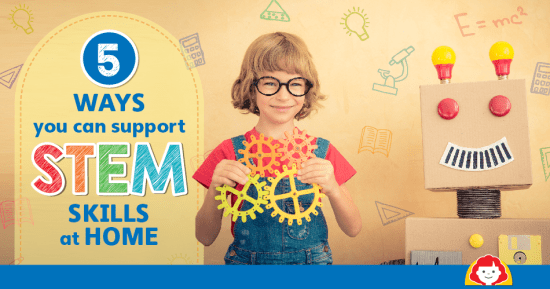
Introduction: Paving the Path for Future Innovators
In an ever-evolving world driven by technology and innovation, it is essential to instill a strong foundation of STEM (Science, Technology, Engineering, and Mathematics) education in young minds. As parents and educators, we play a vital role in fostering curiosity, critical thinking, and problem-solving skills from an early age. This article delves into the significance of STEM learning for young children and offers practical examples of how to seamlessly incorporate STEM activities into their daily lives.
The Power of Early STEM Exposure: Planting Seeds of Innovation
Albert Einstein once said, “The true sign of intelligence is not knowledge but imagination.” STEM learning nurtures this imagination by encouraging children to explore, question, and create. Early exposure to STEM concepts enhances cognitive development, hones analytical skills, and sparks a lifelong interest in discovery.
STEM at Home: A Foundation for Lifelong Learning
Fostering Curiosity Through Everyday Exploration
Engaging young minds in STEM learning doesn’t require elaborate setups; it can be seamlessly integrated into daily activities. For instance, during a nature walk, encourage your child to observe the patterns of leaves, flowers, and insects. Ask open-ended questions like, “Why do you think some leaves are shaped differently?” This simple inquiry paves the way for discussions on botany, biology, and mathematics.
Cooking Up Science in the Kitchen
Cooking provides a hands-on opportunity to explore scientific principles. Involve your child in measuring ingredients, observing changes during cooking, and discussing the effects of heat and temperature. As renowned chef Julia Child once remarked, “In cooking, you’ve got to have a what-the-hell attitude.” Embrace the mess and unpredictability; it’s all part of the scientific process.
School Environments: Building Blocks of STEM Education
Learning Through Play: Building Structures and Concepts
Incorporating STEM in educational settings, such as preschools and daycare centers, creates an enriching environment for young learners. Building blocks, such as LEGO or magnetic tiles, allow children to experiment with structural stability, symmetry, and basic engineering concepts. As architect Frank Lloyd Wright stated, “The mother art is architecture. Without an architecture of our own, we have no soul of our own civilization.”
Coding for Kids: Unleashing Creativity Through Technology
Introducing coding to young children may seem ambitious, but it’s a gateway to creative thinking and problem-solving. Utilize coding platforms designed for kids, such as Scratch, to help them create interactive stories, animations, and games. As Steve Jobs famously said, “Everyone should learn how to program a computer, because it teaches you how to think.”
Community Engagement: STEM Beyond the Classroom
Exploring the Natural World: Science in Action
Community involvement can provide unique opportunities for hands-on STEM experiences. Visit local science museums, botanical gardens, or zoos to ignite your child’s curiosity. Observe animals’ behaviors, explore interactive exhibits, and engage with experts to expand your child’s understanding of the natural world. As naturalist John Muir noted, “In every walk with nature, one receives far more than he seeks.”
DIY Science Experiments: Learning Through Trial and Error
Encourage DIY science experiments at home or in community spaces. Create a volcano eruption with baking soda and vinegar, or make a simple paper airplane to explore aerodynamics. Embrace failures as learning opportunities, teaching your child that even successful innovations often arise from repeated trial and error.
Conclusion: Cultivating Future Innovators Through STEM
Incorporating STEM learning activities for young children is not solely about producing future scientists, engineers, or mathematicians. It’s about nurturing a mindset of curiosity, critical thinking, and innovation. As Henry Ford once stated, “Failure is simply the opportunity to begin again, this time more intelligently.” By embracing STEM education from an early age, we empower our children to approach challenges with resilience, creativity, and the confidence to shape a brighter future. So, let’s embark on this journey of discovery with our young learners, and watch them bloom into the innovators of tomorrow.















